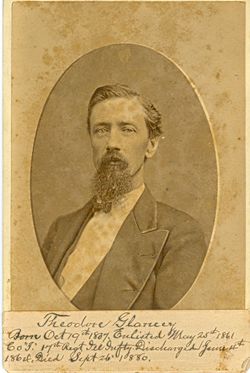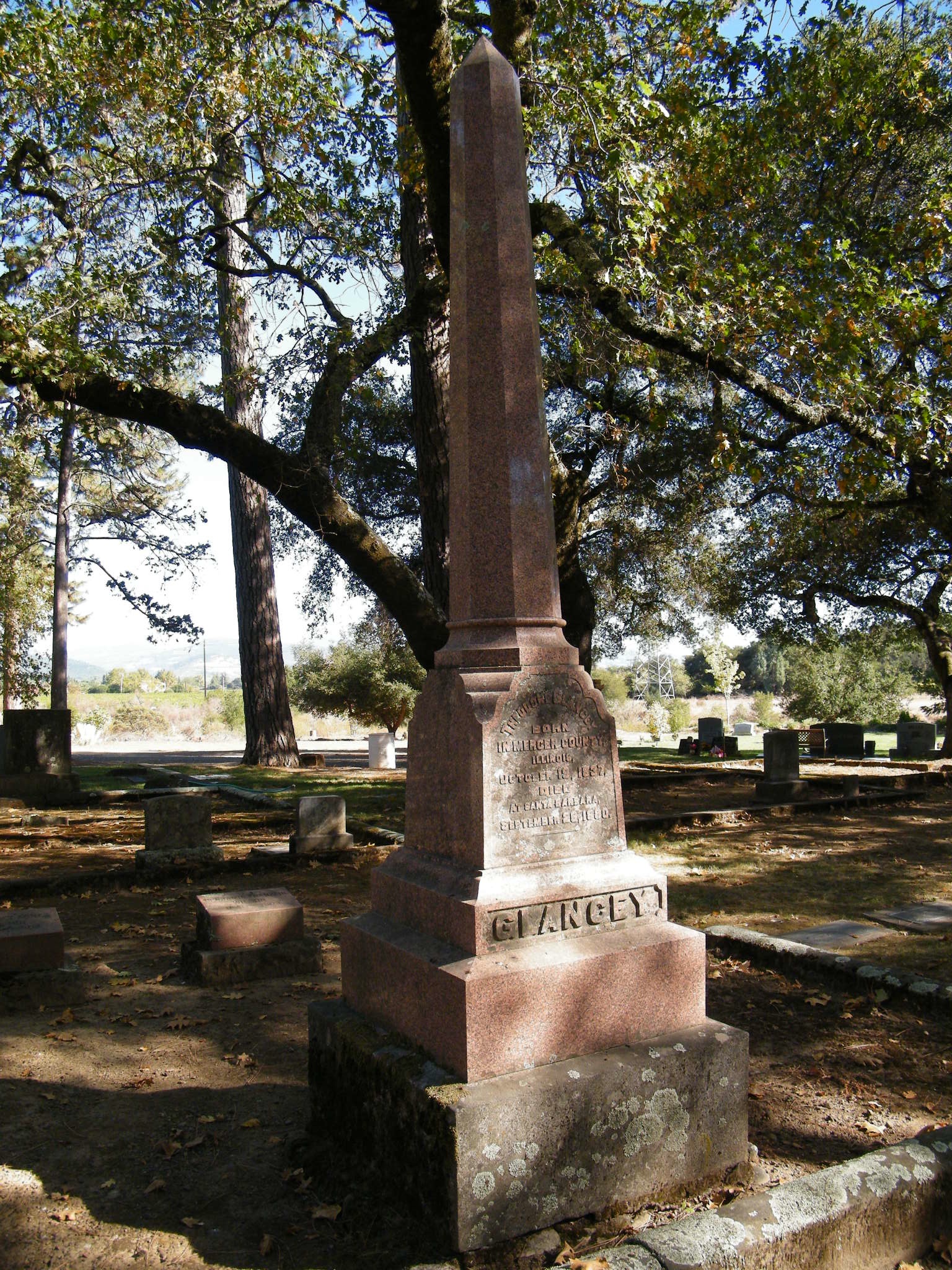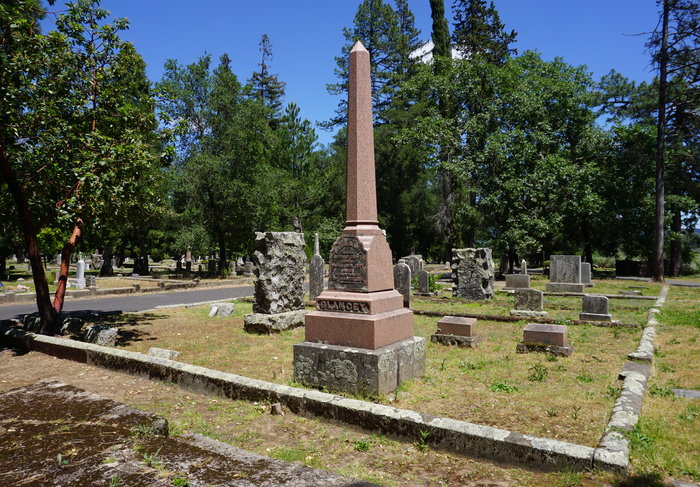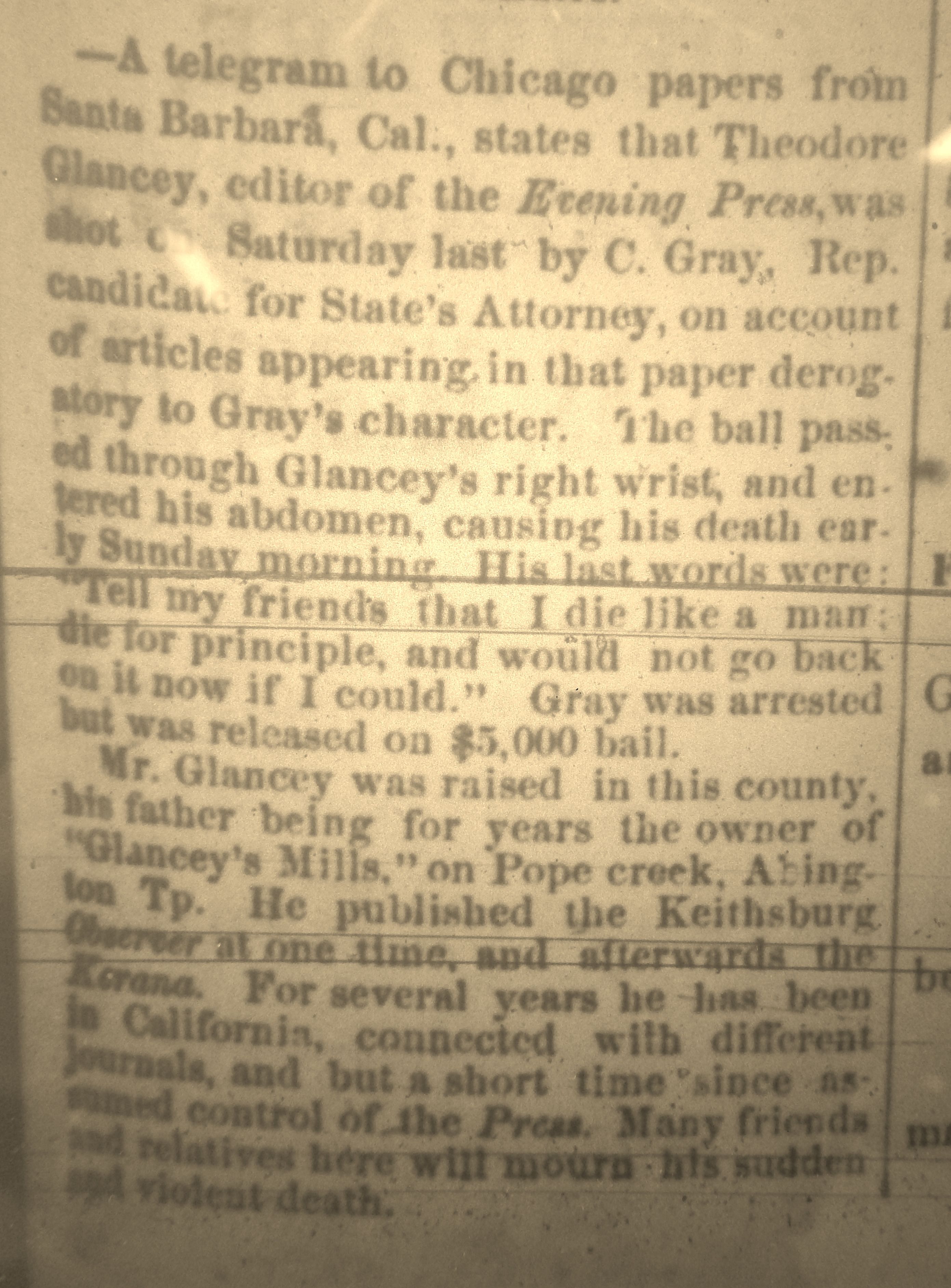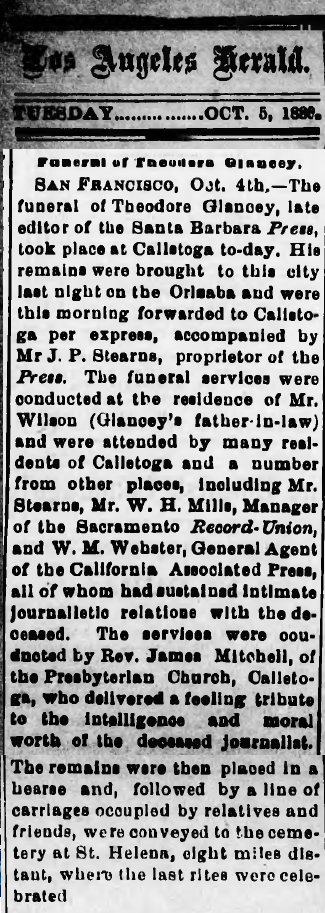A Glancey Monument
A modest monument has just been erected in the St. Helena cemetery over the grave of Theodore Glancey, the editor who was shot in Santa Barbara in 1880. For an inscription it bears these words, being almost the last which Glancey uttered: "I die for a principle, and would not go back on it now if I could."
It is a fact that Glancey died for a principle which is among the vital ones of this day. He was editing the Santa Barbara Press, and his party nominated a candidate for district attorney of the county who was one of the representatives of the worst class of the "bhoy" element.
He was not a fit man to guard the peace and order of the community because there was no one who engaged more frequently in disturbing them than he did. Glancey promptly denounced the nomination in the Press, and refused to support it. Gray, the candidate in question, met the editor and shot him, inflicting a mortal wound. Before dying Glancey made the memorable remark above quoted. He was a martyr and his murder represented an evil principle which is lodged in the political practices of the country and which exerts a powerful influence on the side of bad government.
Gray represented the idea that even a bad man must receive the support of his party and its newspapers when he has managed, by no matter what means, to obtain a nomination, and Glancey represented the idea that it is the right and duty of every citizen, but especially of every newspaper, to reject corrupt and disreputable candidates by whatever party proposed. In the clash between these principles Glancey lost his life, much as Lovejoy lost his life in the clash between freedom and slavery. The cause for which this editor died was no old, out-worn one, but a cause which is fresh and living—the irrepressible conflict between good government and bad as it is being waged in our own times. Such an event as the death of Glancey ought to be commemorated in a more public manner than by a simple tombstone erected seven years after he died.
There ought to be a public monument erected at some conspicuous place in the city of Santa Barbara, and the newspaper men of the State are the proper persons to build it. No more important and interesting subject could engage the attention of the editorial convention which is to be held in San Francisco next month.
-----
Killed by Clarence M. Gray who later died in Sacramento, CA.
-----
∼Civil War Veteran Co F 17 IL Inf
A Glancey Monument
A modest monument has just been erected in the St. Helena cemetery over the grave of Theodore Glancey, the editor who was shot in Santa Barbara in 1880. For an inscription it bears these words, being almost the last which Glancey uttered: "I die for a principle, and would not go back on it now if I could."
It is a fact that Glancey died for a principle which is among the vital ones of this day. He was editing the Santa Barbara Press, and his party nominated a candidate for district attorney of the county who was one of the representatives of the worst class of the "bhoy" element.
He was not a fit man to guard the peace and order of the community because there was no one who engaged more frequently in disturbing them than he did. Glancey promptly denounced the nomination in the Press, and refused to support it. Gray, the candidate in question, met the editor and shot him, inflicting a mortal wound. Before dying Glancey made the memorable remark above quoted. He was a martyr and his murder represented an evil principle which is lodged in the political practices of the country and which exerts a powerful influence on the side of bad government.
Gray represented the idea that even a bad man must receive the support of his party and its newspapers when he has managed, by no matter what means, to obtain a nomination, and Glancey represented the idea that it is the right and duty of every citizen, but especially of every newspaper, to reject corrupt and disreputable candidates by whatever party proposed. In the clash between these principles Glancey lost his life, much as Lovejoy lost his life in the clash between freedom and slavery. The cause for which this editor died was no old, out-worn one, but a cause which is fresh and living—the irrepressible conflict between good government and bad as it is being waged in our own times. Such an event as the death of Glancey ought to be commemorated in a more public manner than by a simple tombstone erected seven years after he died.
There ought to be a public monument erected at some conspicuous place in the city of Santa Barbara, and the newspaper men of the State are the proper persons to build it. No more important and interesting subject could engage the attention of the editorial convention which is to be held in San Francisco next month.
-----
Killed by Clarence M. Gray who later died in Sacramento, CA.
-----
∼Civil War Veteran Co F 17 IL Inf
Family Members
Advertisement
Explore more
Sponsored by Ancestry
Advertisement
